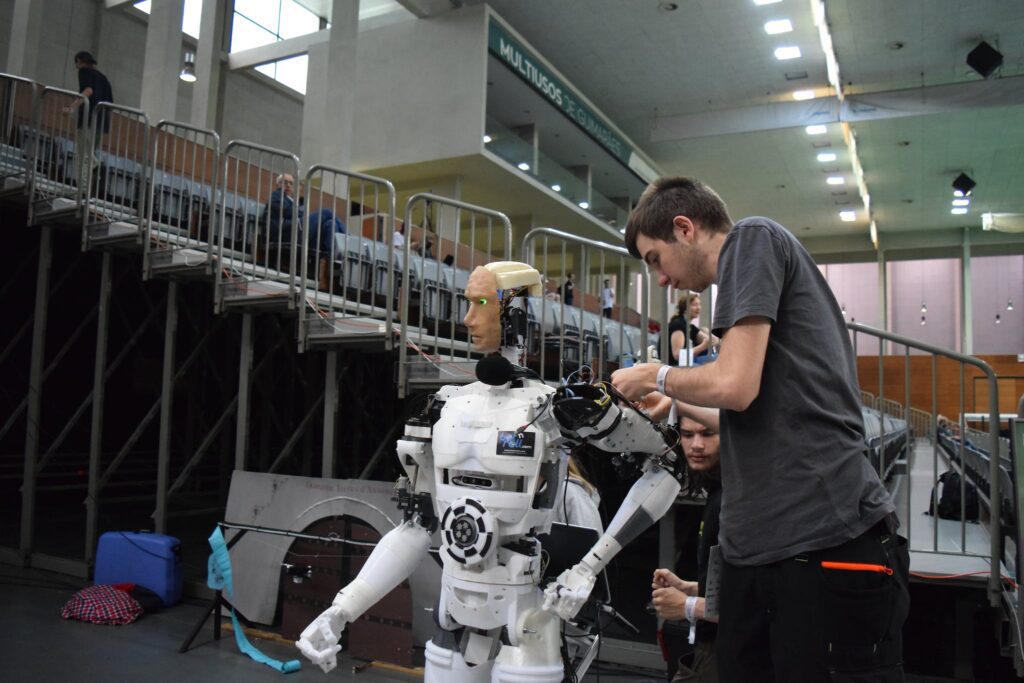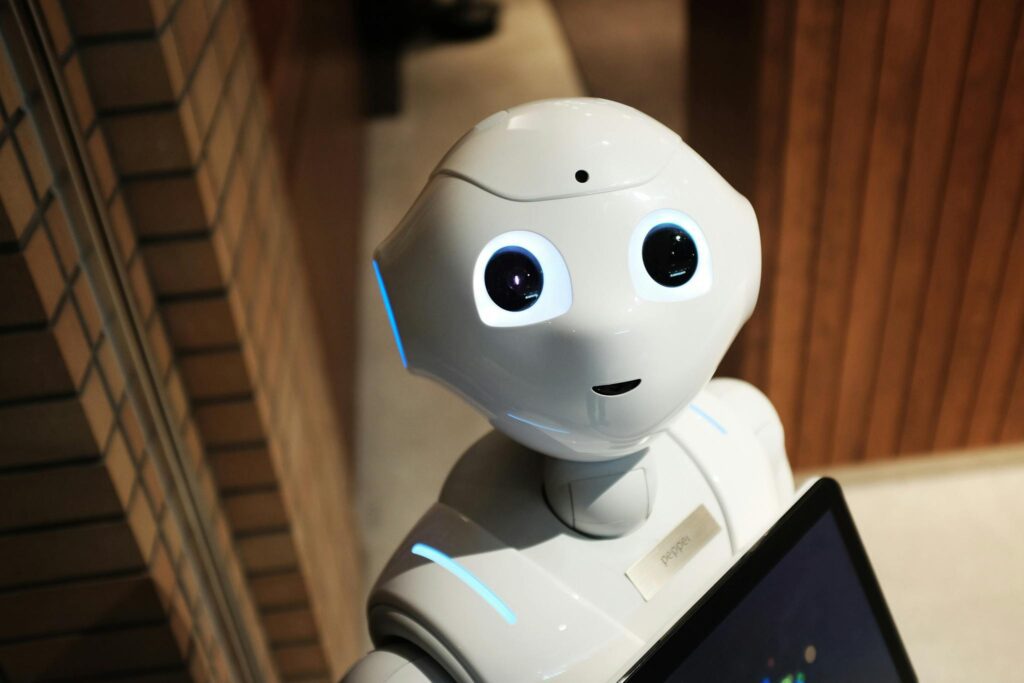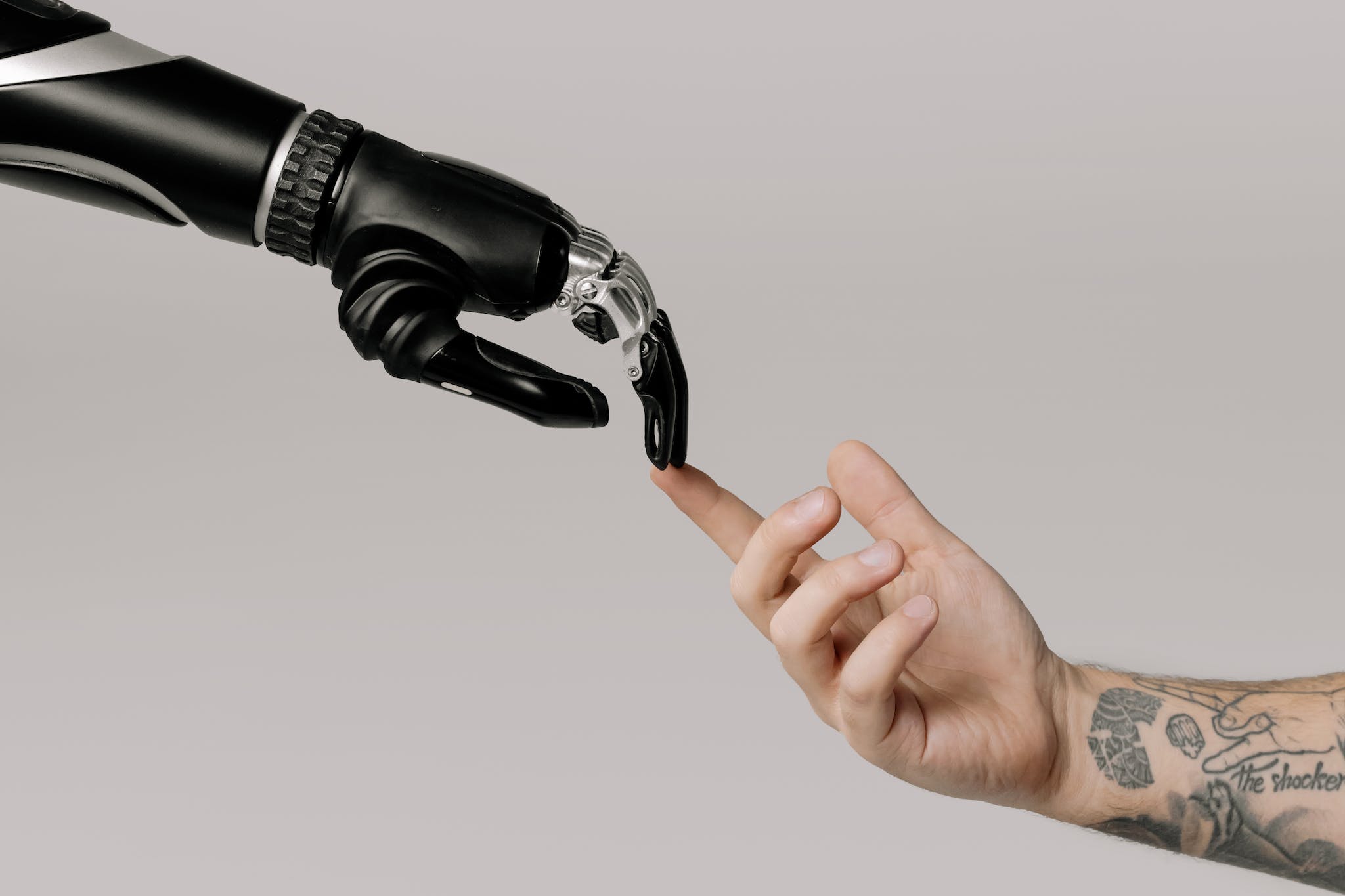The AI Job Disruption
Potential impact of AI and automation on the workforce and broader society.
The rise of artificial intelligence presents both opportunities and challenges as it transforms workplaces and society. The AI Job Disruption: Navigating Workforce Changes in the Age of Automation will bring tremendous change, as many jobs could be eliminated while new tech-driven roles emerge. However, this AI technology revolution also enables innovations that can profoundly improve life if governed thoughtfully.
Rather than resist progress, a growth mindset focused on positives will allow us to successfully navigate workforce changes and job disruption caused by AI automation. With foresight and adaptation, businesses and policymakers can smooth the AI job transition in a way that more broadly distributes benefits.
Approached ethically, AI can augment human capacities rather than fully replace them. Prioritizing worker welfare, new systems must be shaped to elevate people. Solutions like retraining programs, transitional income support, and job matching can help workers adapt to the age of automation.
Hardships will arise but can be mitigated with compassion and care for those impacted by AI job disruption. If directed wisely, AI’s potential to enhance industries, improve healthcare, reduce poverty, and stimulate innovation is immense. With principled governance, this new era of AI workforce changes can unlock unprecedented technological advances that uplift humanity.


If companies adopt these technologies faster than governments can retrain displaced workers, it could cause major societal disruptions. Policymakers need foresight to handle this transition in a way that benefits workers.
This in-depth article analyzes the potential impact of AI and automation on the workforce and broader society. We’ll cover:
- Jobs likely to be eliminated by AI and automation
- New professions that may arise from AI adoption
- Estimates of total jobs at risk of automation
- Challenges for workers and society if disruption happens rapidly
- Solutions to ensure a just AI transition that optimizes benefits
Understanding these dynamics is crucial as AI reshapes work and daily living in the coming decades.
AI Automation Could Displace Jobs Across Many Industries
Experts predict AI and robots could displace tens of millions of jobs as technologies improve. While new roles will emerge, low skill and routine jobs are most vulnerable in the short run.
Here are some of the professions that may decline or change significantly as AI and automation advances:
Jobs Potentially Eliminated by AI & Automation
- Cashiers – Self-checkout, cashier-less stores, mobile payments
- Telemarketers – Interactive voice response systems, chatbots
- Drivers – Self-driving cars, trucks, delivery vehicles
- Warehouse Workers – Automated inventory robots, picking/packing
- Data Entry Clerks – AI data extraction and document processing
- Accountants & Bookkeepers – Automated financial data analysis
- Manufacturing & Assembly Line Workers – Industrial robots, cobots
- Paralegals & Legal Assistants – AI for document review, research
- Radiologists – AI analysis of medical images and scans
- Insurance Claims Representatives – AI claims review and processing
- Teleoperators – AI chatbots provide customer service
- Postal Service Workers – Autonomous delivery robots, drones
- Fast Food Cooks – AI-powered robotic food preparation
- Retail Salespeople – AI-powered apps, virtual reality shopping
- Massage Therapists – AI-controlled massage robots
- Bartenders – Robotic drink preparation and service
- Receptionists – Automated visitor check-in systems
- Translators – AI-powered real-time translation apps
- Truck, Taxi, Rideshare Drivers – Self-driving vehicle adoption
- Farm Workers – AI-powered robotic farming equipment
- Flight Attendants – Automated service on flights
- Mortgage Brokers – AI mortgage qualification and lending
- Travel Agents – AI chatbots, virtual travel planners
- Librarians – AI digital reference services, search
- Retail Cashiers – Frictionless stores, scan & go apps
- Telemarketers – Conversational AI handles outreach
- Food Prep Workers – Intelligent robotic food production
- Landscaping & Groundskeepers – Autonomous mowing/maintenance
- Reporters & Sports Journalists – AI-generated news and articles
- Baggage Porters & Bellhops – Autonomous luggage robots


These are just some of the many examples of occupations likely to decline with advances in AI systems, machine learning, robotics, and automation. Low skill and repetitive jobs will be disrupted first. But in the long run, a wider range of positions may change significantly.
New AI-Driven Jobs Will Also Emerge
While AI and robots may displace many roles, they will also create new job opportunities. Here are some of the specialized occupations that are likely to grow around AI adoption:
- AI Researchers & Scientists – Invent new techniques, algorithms
- Data Analysts – Prepare, label, clean data to train AI
- Machine Learning Engineers – Develop ML models/applications
- Roboticists – Design, program intelligent robots
- MLOps Engineers – Deploy, monitor, maintain AI systems
- AI Ethicists – Study bias, ensure accountability
- Customer Service Chatbot Trainers – Optimize conversational AI
- Autonomous Vehicle Technicians – Service self-driving cars
- Drone Operators & Pilots – Operate delivery/inspection UAVs
- Robot Operations Technicians – Program, maintain cobot fleets
- VR/AR Content Creators – Develop immersive experiences
- Cybersecurity Experts – Protect increasingly complex systems
- AI Business Strategists – Identify applications to improve operations
- AI Salespeople – Sell AI software, services, consulting
- Digital Therapists – Provide mental health therapy via AI chatbot
- Autonomous Restaurant Servers – Manage fleets of food runner bots
- Machine Learning Quality Assurance – Testing accuracy of AI systems
- Neural Network Computer Chip Designers – Invent new hardware
- Personal AI Assistants – Help individuals optimize home/work AI
- AI Policy Analysts – Develop governance frameworks as adoption grows
- AI Creatives – Generate art, music, literature with generative AI
- AI Trainers – Continuously improve system intelligence.
These are a subset of the many specialized roles that will support AI research, development, and integration across industries. Demand for computer scientists, mathematicians, psychologists, philosophers, and creative experts adept with AI will also boom.
While the net impact on jobs remains uncertain, it’s clear AI and automation will catalyze major workforce shifts. All workers will need new skill sets to stay valuable in the age of AI.
Estimates Suggest Millions of Jobs Could Eventually Be Disrupted
Predicting which jobs will be eliminated by AI is challenging. But various research estimates suggest automation will impact a substantial number of occupations in the coming decades:
- A McKinsey study estimates up to 30% of tasks in 60% of occupations could be automated with current technology.
- A PwC analysis estimates up to 30% of UK jobs could be at high risk of automation by the 2030s.
- A Brookings Institution report found 25% of US employment (36 million jobs) will face high exposure to automation in the coming decades.
- An OECD study determined 14% of jobs across 32 countries are highly automatable, 32% could significantly change, and another 50% face medium risk.
Though projections differ, most experts agree AI and automation will reshape a significant portion of the global workforce in the next 10-30 years. The pace and scale will depend on technological progress, regulation, and adoption rates.


Transitioning millions out of occupations at high automation risk in a short timeframe would be extremely disruptive for workers, businesses, and society. Proactive policies are crucial to ensure this shift benefits as many people as possible.
Societal Challenges If Automation Exceeds Retraining Capacity
A key concern is that companies and industries could adopt AI and automation faster than governments can retrain displaced workforces. If retraining lags automation, it could trigger major challenges:
Mass Unemployment
Without sufficient reskilling programs, rapid job automation could create widespread unemployment. Losing careers involuntarily can devastate workers financially and psychologically. It risks excluding millions from labor markets against their will.
Economic Collapse
As more people lose jobs and incomes, aggregate demand and spending will fall. This slowdown can trigger recession, deflation, and financial crises. Struggling small businesses may also fail, causing cascading economic damage.
Political Upheaval
Mass job loss often feeds populist unrest. Demands may grow for radical policies like universal basic income to sustain incomes. Anger over unemployment could destabilize democratic governments if unchecked.
Surge in Crime
With limited legitimate incomes, property crime, underground economies, and black markets could expand as desperate people turn to illegal means of providing for families.
Mental Health Crisis
For many, jobs provide identity, purpose and social connections. Losing work involuntarily can create serious psychological distress, anxiety, depression and addiction challenges for displaced workers.
Skills Mismatch
Without retraining programs aligned to in-demand roles, skills gaps will prevent available jobs from being filled. This skills mismatch will constrain economic growth and individual wellbeing.
Strain on Social Programs
If economies stall with many depending on social assistance, funding these programs becomes more difficult. Safety nets risk being overwhelmed amid shrinking tax revenue.
Demographic Crisis
Workforce disruption will hit as populations age and dependency ratios rise. This complicates funding retraining programs and pensions just as demand grows, risking generational tensions.
Civil Unrest
If mismanaged, the scale of disruption risks boiling over into protests, strikes, and public unrest in response to joblessness and inequality. Societal divisions could surge.


While these are worst-case scenarios, the risks are real if automation happens abruptly and at scale before workers can transition successfully. Sufficient investments in retraining, job matching, transitional incomes, and related support systems will be essential.
Solutions for an Effective Workforce Transition
With foresight and proactive policies, societies can navigate the AI job disruption in a way that benefits as many people as possible. Potential solutions include:
- Retraining programs to reskill workers for new roles in growing fields. Governments should expand access to affordable technical education and certifications.
- Unemployment support and transitional income to sustain displaced workers during periods of training and job searches.
- Job matching programs to connect workers to availabe jobs they’re qualified for. Policymakers should incentivize employers to prioritize at-risk workers.
- Private sector engagement so companies transparently communicate plans to automate and provide retention incentives. Businesses should also invest in upskilling workforces.
- Education reform to equip students with technical, creative, and interpersonal skills that complement AI strengths for future job security.
- AI ethics standards to ensure systems are transparent and unbiased. Algorithms should augment people rather than fully replace them where possible.
- Tax incentives to encourage job creation, new business formation, and entrepreneurship in fields less exposed to automation.
- Infrastructure investment to create employment and economic activity during periods of transition and uncertainty.
With collaborative action across government, private companies, educators, and communities, societies can thrive through the AI transformation of work. But it requires taking a proactive approach and ensuring support systems are in place before large-scale disruption happens. Prioritizing worker welfare, effective adaptation will enable the benefits of AI automation to be shared broadly.
The Future of Work Hinges on AI Governance
How the AI job disruption unfolds depends significantly on governance and policies. With proper strategies, automation can supplement human strengths and improve wellbeing. But without active transition management, rapid workforce changes risk severe societal consequences.
AI will reshape business and the economy over the next decade and beyond. Leaders across sectors should urgently work together to ensure these technologies uplift human capabilities rather than jeopardize livelihoods and communities. With ethics, foresight and planning, the AI era can usher in greater prosperity and progress for all.
What policies and strategies do you think are needed for society to thrive through the AI transformation of work? Share your thoughts below!
How many estimated possible people could be displaced?
- It’s difficult to give precise estimates, but here’s an attempt at a worst-case scenario if AI and automation advance rapidly:
- Potentially hundreds of occupations could be fully or partially automated, though the exact number is speculative. Looking across all industries and job types, here are some rough estimates:
- Transportation: All driving-related jobs from taxis to trucks to piloting planes. That’s over 4 million jobs displaced just in the US transportation industry.
- Office and Administrative: Anything routine and rules-based like data entry, payroll, bookkeeping and clerical work. Around 22 million administrative roles could be affected.
- Production and Warehousing: Factory workers, stock clerks, packaging roles, assembly lines. Around 12 million primarily blue collar jobs at risk just in manufacturing.
- Retail and Sales: Cashiers, shop assistants, telemarketers, door-to-door sales. That’s over 15 million retail jobs on the frontlines.
- Food Service: Fast food workers, bartenders, waiters, chefs and cooks. Up to 12 million jobs in the restaurant industry could change significantly.
- Healthcare: Radiologists, pharmacists, medical lab technicians performing analytical tasks. Nearly 2 million healthcare jobs may eventually be impacted.
- Customer Service and Support: Telemarketers, reservation agents, tellers, librarians. About 9 million positions displaced.
- Professional Services: Paralegals, accountants, mortgage brokers. Around 8 million white collar jobs disrupted.
- In total, conservatively over 80 million jobs in the US across almost every industry could potentially be fully or partially eliminated in a worst case scenario. The global number could be over 250 million jobs eventually displaced by automation.
- This would be hugely disruptive for workers and societies. It would require large-scale workforce retraining programs and creative solutions to keep unemployment from spiking drastically. The transition would likely happen gradually over decades rather than abruptly. But the scale of change highlights why we need to proactively develop strategies to adapt to an AI-powered future.
The rise of artificial intelligence and automation will both displace many existing jobs and create demand for new roles that leverage these advanced technologies. The extent of the impact remains uncertain but will likely result in major workforce shifts in the coming decades. Workers should gain skills that complement AI strengths to remain valuable in the labor market.







